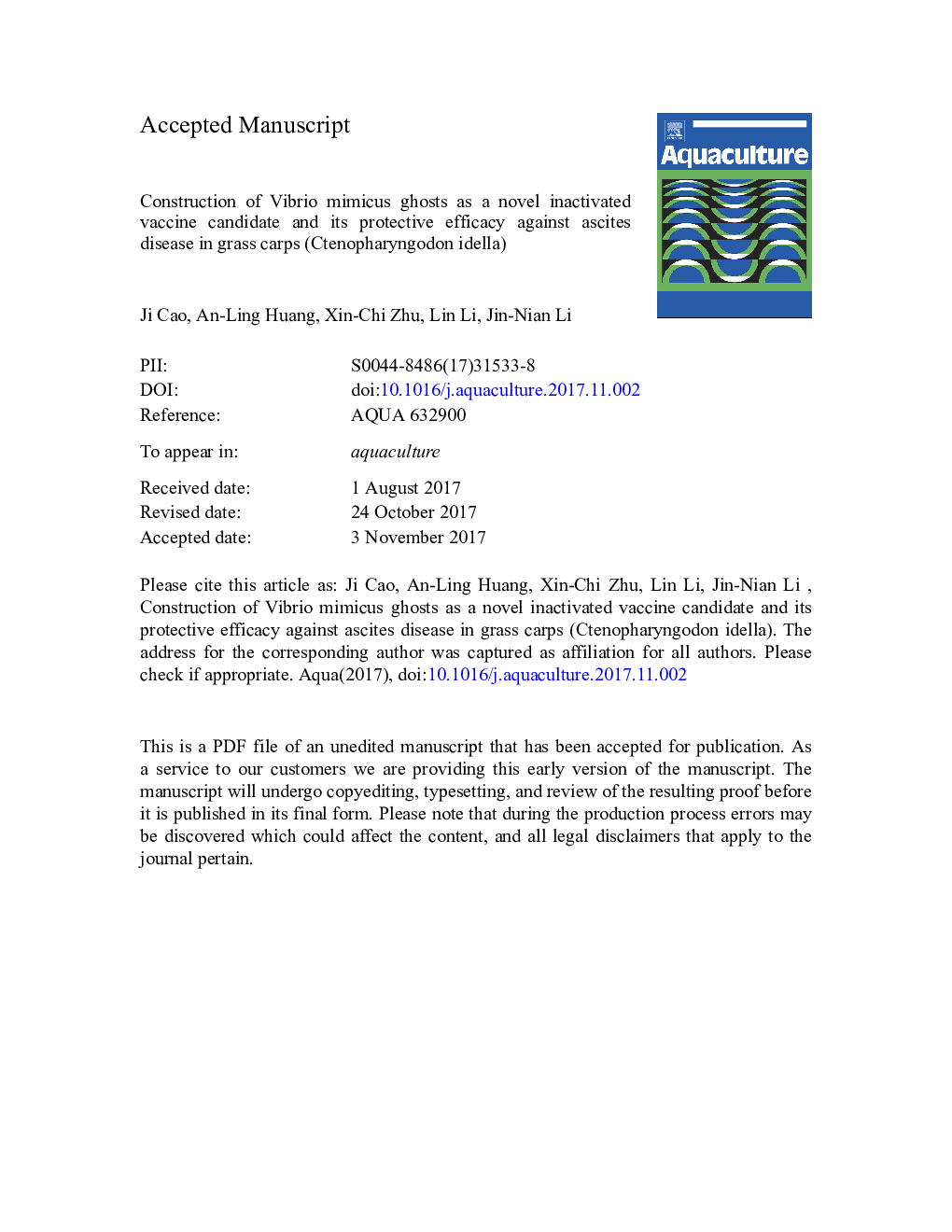| Article ID | Journal | Published Year | Pages | File Type |
|---|---|---|---|---|
| 8493493 | Aquaculture | 2018 | 31 Pages |
Abstract
Vibrio mimicus (V. mimicus) is an important bacterial pathogen causing high mortality rates for fish and shellfish species. Prevention of vibriosis still remains a challenge, and an efficacious and safe vaccine that confers protection against V. mimicus needs to be developed. Here, with the purpose of generating V. mimicus bacterial ghosts (VmBGs), the bacteriophage PhiX174 lysis gene E was cloned into the shuttle plasmid pBV220 for construction of the recombinant temperature-sensitive lysis plasmid pBV220-lysisE. The pBV220-lysisE was then electroporated into V. mimicus strain 04-14, and the resultant transformants were used for production of VmBGs by inducing lysis gene E expression. The VmBGs were characterized by observing their morphology and structure on electron microscopy, and then the safety and vaccine potential of VmBGs were further evaluated in grass carps (Ctenopharyngodon idella), The results showed that the efficiency of VmBGs induction was about 99.91%, and no living bacteria survived after lyophilization. The obvious transmembrane lysis pores with loss of cytoplasmic materials were observed in VmBGs by electron microscopy. Fish vaccinated with VmBGs via intraperitoneal route showed significantly up-regulated expression of several immune-related genes (G-type lysozyme, IL-1β, MHC-I and MHC-IIβ) in the spleens, and higher serum agglutinating antibody level, serum bactericidal activity as well as peripheral blood lymphocytes proliferation responses compared to formalin-killed cells of V. mimicus (FKC) vaccinated fish and PBS control fish. More importantly, strong protection with relative survival rate of 76.67% was recorded in the VmBGs-vaccinated fish after challenge with V. mimicus strain 04-14, whereas the FKC vaccine and PBS control showed 40% and 0% survival rate, respectively. Overall, these findings suggest that the newly constructed VmBGs may be used as a promising vaccine candidate for the control of V. mimicus infection in fish.
Related Topics
Life Sciences
Agricultural and Biological Sciences
Aquatic Science
Authors
Ji Cao, An-Ling Huang, Xin-Chi Zhu, Lin Li, Jin-Nian Li,
